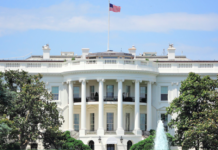
President Trump continues to scale back the regulatory state — an effort that dates back nearly 40 years, when President Reagan cut the number of pages of the federal registry by 25 percent and issued Executive Order 12291, requiring regulations to be re-reviewed by the Executive Office of the President.
Years later, President Clinton scaled back this requirement through his own executive order, which has been reaffirmed by all subsequent presidents. Federal regulations have grown exponentially ever since.
Reagan’s idea of expanding centralized review should be considered again, but to effectively do so, Congress must expand the Office of Information and Regulatory Affairs (OIRA) — the one agency empowered to oversee significant regulations.
With currently just over 45 people working for OIRA, the size of the regulatory state is surpassing its ability to efficaciously review all significant regulations. Ironically, as the volume of regulations has exponentially grown since President Reagan first proposed expanding centralized review, the size of OIRA has been cut in half.
Whether an administration is promulgating more regulations or focusing on deregulation, both require a consistent application of the guidelines set out in the Administrative Procedure Act (APA).
For too long, stakeholders including cities, states and businesses have had to guess when and how to express both their advice for better regulations and concerns for unduly harmful ones.
Stakeholders can often be the best source of practical commonsense information not only for individual regulations, but also for improving the federal regulatory system itself. Ensuring consistency in the overall process will assist agencies in getting the best available information.
While President George W. Bush attempted to expand OIRA’s role to cover significant “guidance documents” that had the force of regulations, President Obama changed course, citing concern that expanding OIRA would place too much centralized control in the Office of the President.
However, while too much control in one government entity is a cause for concern, except for independent agencies, all department and agency heads serve at the pleasure of the president and are ultimately responsible for executing the president’s agenda, including promulgating regulations.
Requiring one central location, within the executive branch, not only fosters consistency in the regulatory process by coordinating with agencies to avoid “inconsistent, incompatible, and duplicative policies,” but it also helps all stakeholders and the public at large have confidence that the same “rules” apply government-wide with respect to promulgating regulations.
Critics claim that an expansion of OIRA will further slowdown a process that is plagued by unnecessary delays attributable to the regulated community and would be a further detriment to the health and welfare of the public.
However, inconsistency in the application of the APA’s procedures has resulted in multiple lawsuits that have thwarted the process much more than an expanded centralized review process. As a result, critics should be heralding an expanded OIRA to help expedite and bring consistency to the review process.
There are those that claim that there are far too many regulations promulgated each year to have OIRA review them all. While this is undoubtedly true, President Clinton’s Executive Order 12866, which has been adopted by each successive administration, limits OIRA review to only “significant” regulatory actions.
As a result, OIRA does not get bogged down in the mundane administrative functions of agencies, but rather focuses only on those that will have the biggest impact on the public’s health and well-being, environment and economy.
In addition, another important role of OIRA is retrospective review of existing regulations. If regulatory accumulation is as big of a problem as most experts and all successive presidents since Reagan have repeatedly indicated, the first step may be to bring OIRA back to at least the size it was in the 1980s.
Under retrospective review, one looks back to see that current regulations are still producing benefits that are justified by the costs. While previous presidents have asked each agency to review their own regulations to determine whether the costs still justify the benefits, having an expanded centralized review of regulations across the agencies would be the best way to address regulatory accumulation.
Regulatory accumulation is the potential burden caused by the contemporaneous application of seemingly unrelated regulations. The problem of regulatory accumulation has been one that has received bipartisan attention. Given that the regulatory burden is increased with each successive agency’s added regulation, it is vitally important to address this problem with a centralized review process.
The alarming growth of federal guidelines, directives and rules are outpacing the ability to effectively oversee their impact. Congress should empower OIRA to meet the challenge.
Timothy Doyle is vice president of policy and general counsel for the American Council for Capital Formation, a free-market think tank.






